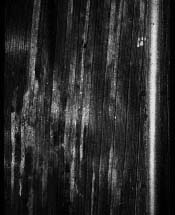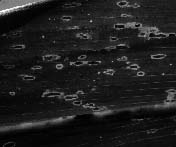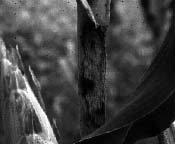|
zeae-maydis
is unusual in that it can grow and survive on leaf tissue for several days
before penetration.
Disease Loss
Like other pathogens that kill leaf tissue, Cercospora zeae-maydis
reduces yield by destroying green tissue. Damage, in terms of reduced grain
yield, depends on how much leaf area is destroyed and how early in plant
development the destruction occurs. As a general rule, if lesions appear
on the upper half of the plant within 2 weeks before or after tasseling,
yield reductions can be substantial. If lesions do not appear on the upper
leaves until 6 weeks after tasseling, damage will be minimal.
Stalk lodging can be a problem in fields heavily damaged by gray leaf
spot. While the gray leaf spot pathogen can penetrate stalks from leaf
sheaths, it is unclear whether it is the primary or secondary cause of
stalk decay. Leaf damage from gray leaf spot may be sufficient to result
in increased stalk rot from various other stalk rot organisms. Regardless
of whether Cercospora zeae-maydis is a primary or secondary stalk
rot organism, fields with gray leaf spot should be checked for stalk rot
incidence in several locations as the crop reaches maturity. If more than
10% stalk rot is present at black layer, harvesting the field as soon as
possible will usually more than pay the drier costs.
Disease Management
Management of gray leaf spot is achieved by hybrid selection, crop rotation,
tillage system, or more commonly, a combination of these. Growers should
manage this disease on an individual field basis. It is important to know
which fields have the disease in order to make sound management decisions
for the following years. Following is a summary of disease risk starting
with the highest |
|
risk fields and going to fields
with a lesser risk. Keep in mind that this disease organism can be spread
by wind currents over long distances (several miles), but disease development
in lower risk fields usually occurs 2 to several weeks later than in high
risk fields, and disease losses are usually not as great.
1. (Highest risk) Field in continuous corn, the disease occurred in
the previous crop, and infected crop residues are on the soil surface.
2. Field in continuous corn, the disease occurred within the past 2
years and infected corn residues are on the soil surface.
3. Field rotated from a non-host crop, but adjacent to a field(s) that
is listed in #1 or #2 above.
4. Field in continuous corn, the disease occurred in the previous crop,
but infected residues have been completely buried by moldboard plowing.
5. (Lowest risk) Field rotated from a non-host crop for at least 2 years,
and not adjacent to a field(s) that is listed in #1 or #2 above.
Crop Rotation. Rotation to a non-host crop for 1 to 2 years reduces
the inoculum potential within that field. Two years is preferable for no-till
fields. The pathogen survives from season to season only in infected plant
residues; e.g. leaves, husks, and leaf sheaths. When the infected residues
decompose, the source of primary inoculum is gone. Buried crop residues
break down more quickly than residues left on the soil surface. On the
soil surface, leaf tissue usually decomposes within 6 to 9 months; husk
and leaf sheath tissues may remain partially intact into the second year.
Studies |
|
have shown that the
fungus survives abundantly on surface residue over the first winter and
through the second winter.
Crop rotation by itself may not always be sufficient to prevent yield
losses in fields that are surrounded by heavily infested fields. Under
these conditions, selection of hybrids with moderate gray leaf spot resistance
may be advisable.
Barnyardgrass, Johnsongrass, and sorghum may be hosts of the gray leaf
spot fungus. Non-host crops include soybeans, wheat, oats, barley, alfalfa,
clover, and most forage grasses.
Tillage. Complete burial of infected crop residues by moldboard
plowing will reduce the source of primary inoculum within a field. Where
clean plowing is not desired because of soil erosion potential, government
programs, or other factors, a combination of rotation and/or hybrid selection
is advisable.
Resistant Hybrids. Some hybrids have resistance (sometimes called
tolerance) to the disease. Some hybrids with a high degree of resistance
to gray leaf spot have lower potential yields (in the absence of gray leaf
spot) than susceptible hybrids or hybrids with lower degrees of resistance.
No hybrids are immune to the disease. Resistance in corn is quantitative,
thus the variability between hybrids. Many dent corn hybrids currently
on the market are susceptible to gray leaf spot, a few are highly susceptible,
and some have moderate resistance. Consult your seed company representatives
about the level of resistance or tolerance to gray leaf spot in their hybrids
and your specific needs. Well adapted hybrids with good yield potential
and better gray leaf spot resistance are beginning to become available. |
|




